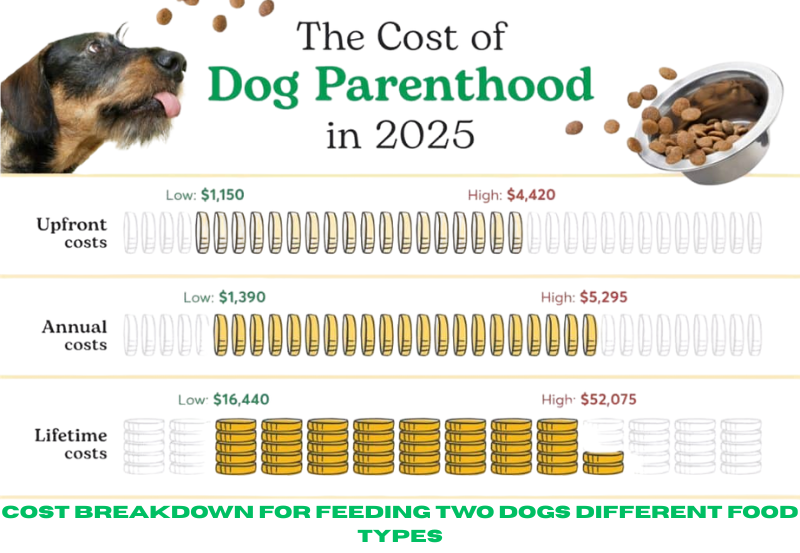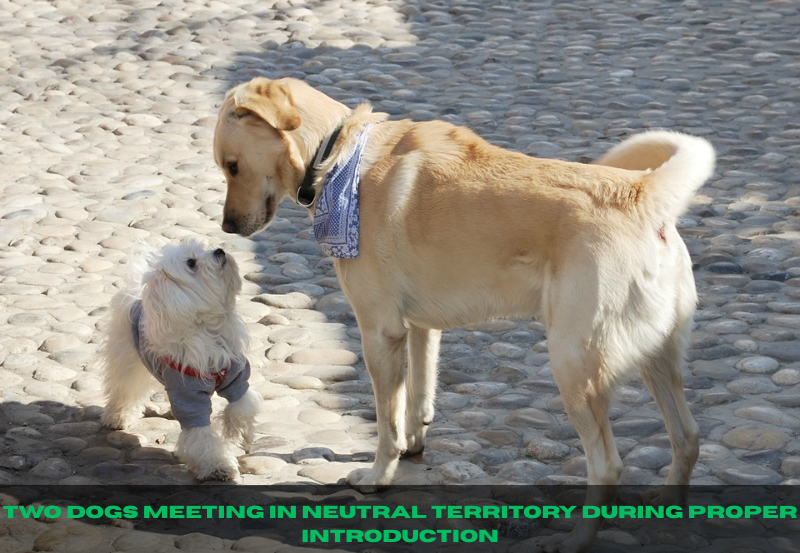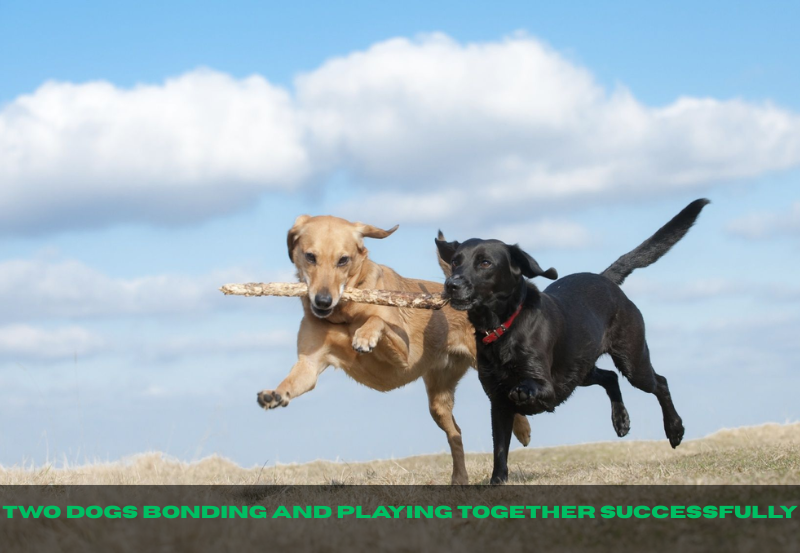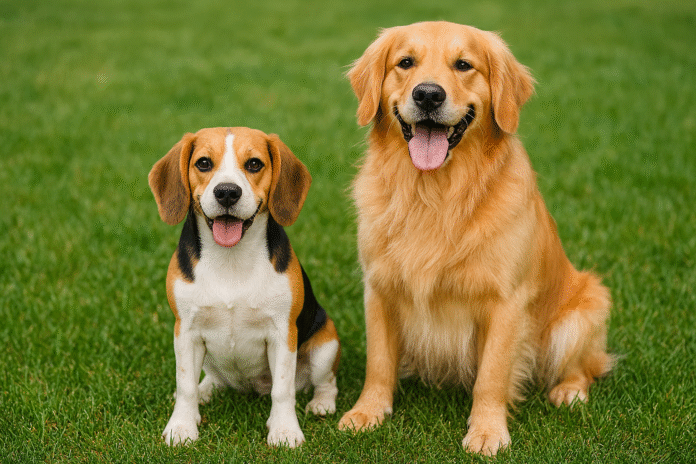When my family started talking about getting a second dog, I thought it would be simple. Our golden retriever seemed lonely, and adding another furry friend felt like the perfect solution. Boy, was I wrong! Three months later, I’m finally ready to share what really happens when you go from one dog to two.
The Moment I Knew We Needed Another Dog
It started innocently enough. Max would sit by the window for hours, watching other dogs play at the park across the street. When we came home from work, he’d follow us around like he hadn’t seen another living soul all day. My daughter kept saying, “Mom, Max needs a brother!”
That’s when I started browsing adoption websites. Big mistake – those puppy photos are dangerously adorable.
What Nobody Tells You About the First Month
Here’s the truth: the first few weeks were absolutely chaotic. I expected some adjustment, but nothing prepared me for the reality. Max, who had been perfectly house-trained for two years, suddenly started having accidents again. The new puppy, Luna, cried all night and chewed everything she could reach.
My biggest shock? They didn’t instantly become best friends. I’d pictured them cuddling and playing together immediately. Instead, Max mostly ignored Luna while she desperately tried to get his attention by stealing his toys and jumping on him.
The Money Talk – Let’s Get Real About Costs

Nobody warns you how expensive two dogs really are. I thought I’d just need to buy a bit more food and maybe an extra toy. Wrong again!
Our monthly budget went from $80 to about $180, and that’s just for basics. Here’s where the money actually goes:
Food became tricky because Max eats senior formula while Luna needed puppy food. Two different bags, two different feeding schedules. When Luna got into Max’s food, she had stomach issues for three days.
Vet bills doubled, obviously, but what I didn’t expect was how often they’d both need care at the same time. When Luna brought home fleas from the dog park, guess who else needed treatment? Emergency visits happen more often too – if one dog finds something interesting to eat on a walk, the other usually follows.
The grooming situation got complicated fast. Luna sheds everywhere, and Max started getting matted because I couldn’t keep up with brushing both of them regularly.
Getting Them Used to Each Other (The Right Way)

I made every rookie mistake in the book during introductions. I brought Luna straight home and expected Max to welcome her with open paws. The tension was immediate.
After calling a trainer (yes, that happened week two), I learned the proper way. We started over with neutral territory meetings at a nearby park. My neighbor helped by walking Max while I handled Luna. We walked them parallel to each other, staying about 20 feet apart at first.
The breakthrough came during week three when Max actually looked interested in Luna instead of just tolerating her presence. Small victories matter when you’re dealing with two stubborn personalities!
Training Two Dogs Feels Impossible (But It’s Not)
Group training sessions were a disaster. Luna would get distracted by Max, and Max would ignore commands because he was too busy watching Luna. Everything took twice as long and felt three times harder.
What finally worked was splitting them up. I’d practice with Max in the morning before work, then spend time with Luna in the evening. Once they each knew their individual names and basic commands, group sessions became manageable.
The “wait” command saved my sanity. Teaching both dogs to wait at doorways prevented the stampede that used to happen every time someone rang the doorbell.
Feeding Time Drama (And How We Solved It)
Food became a battleground immediately. Max, who had never shown any food aggression, suddenly started gulping his meals and eyeing Luna’s bowl. Luna learned to eat fast because she sensed the competition.
We moved their bowls to opposite ends of the kitchen, then eventually into separate rooms. Meal supervision became mandatory after Luna figured out she could finish first and then steal Max’s leftovers.
Free feeding was out completely. Scheduled meals worked better anyway – both dogs learned the routine and stopped begging throughout the day.
Exercise Gets Complicated With Different Energy Levels
Max needs about an hour of walking daily, preferably split into two shorter walks. Luna needs at least two hours of active play plus those walks. Trying to meet both their needs without exhausting myself took some creativity.
Morning walks work for both – Max gets his exercise while Luna explores and socializes. Afternoons became Luna’s high-energy time with fetch and training games while Max napped. Evenings were for family activities that tire everyone out, like hiking trails or trips to the dog beach.
Space Issues I Didn’t Consider
Our house felt plenty big for one dog, but two dogs need more room than you’d think. Each dog needed their own bed, their own space to retreat when overwhelmed, and clear paths to move around without stepping on each other.
We rearranged furniture to create two distinct “zones” – Max claimed the living room couch while Luna preferred the kitchen area near her crate. Having separate spaces reduced conflicts significantly.
Health Scares Happen in Pairs
When Max caught kennel cough at daycare, Luna got it three days later despite our best efforts to keep them apart. Treating both dogs simultaneously meant double medication schedules and twice the worry.
I learned to keep basic medical supplies for both dogs and know which emergency vets in our area handle multiple pets. Having a plan before you need it makes stressful situations much more manageable.
Travel Plans Change Everything
Road trips require military-level planning now. Two carriers, two sets of supplies, double the bathroom stops. Hotel searches became more complicated because many pet-friendly places charge per animal or have size restrictions.
Boarding both dogs costs more than I expected, and some facilities wanted them in separate kennels even though they live together. Planning ahead became essential for any trip longer than a day.
Signs Things Are Working Out

Around month four, I started seeing positive changes. Max began seeking out Luna for play sessions instead of avoiding her. They developed their own games – Luna would steal his rope toy and run, Max would chase her, then they’d both settle down with their respective prizes.
The real turning point came when Max got sick and Luna sat next to his bed the entire day. That’s when I knew they’d bonded beyond just coexisting in the same house.
When I Worried It Wouldn’t Work
There were definitely moments I questioned our decision. During week six, they got into their first real fight over a dropped piece of chicken. It was mostly noise and posturing, but it scared everyone involved.
That incident taught me to watch for subtle signs of tension before they escalate. Now I recognize when one dog is getting overwhelmed and needs a break from the other.
Mistakes I Made Along the Way
Treating them like they were the same dog was my biggest error. Max is calm and methodical, Luna is impulsive and energetic. They needed different training approaches, different exercise routines, and different amounts of attention.
I also rushed the bonding process because I wanted them to be friends immediately. Relationships take time, even between dogs. Some days they love each other, some days they just tolerate each other, and that’s perfectly normal.
The Unexpected Joys
Watching them develop their own relationship has been amazing. They have inside jokes – well, dog versions of inside jokes. Luna learned to open doors by watching Max, and now they’re both escape artists. They’ve created their own play style that involves lots of dramatic flopping and gentle mouth wrestling.
Max became more active with Luna around, and Luna learned to settle down by copying Max’s calm behavior. They balanced each other out in ways I never expected.
Should You Get a Second Dog?
After eight months with two dogs, I can say it’s been worth every challenge, but it’s not for everyone. If you’re considering it, be honest about your time, energy, and financial situation.
Two dogs require more than twice the work initially. Training, exercise, feeding, and general care all become more complex. The adjustment period lasts months, not weeks.
But if you can handle the chaos and have realistic expectations, two dogs can be incredible. Our house is definitely louder and messier, but it’s also filled with twice the personality and entertainment. Just make sure you’re ready for the real experience, not the Instagram version of multi-dog life.
The best advice I can give? Take your time, prepare thoroughly, and remember that every dog relationship is different. What worked for us might not work for you, and that’s okay. The goal is finding what makes your whole family – including your current dog – happy and healthy.



